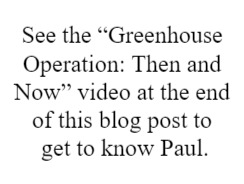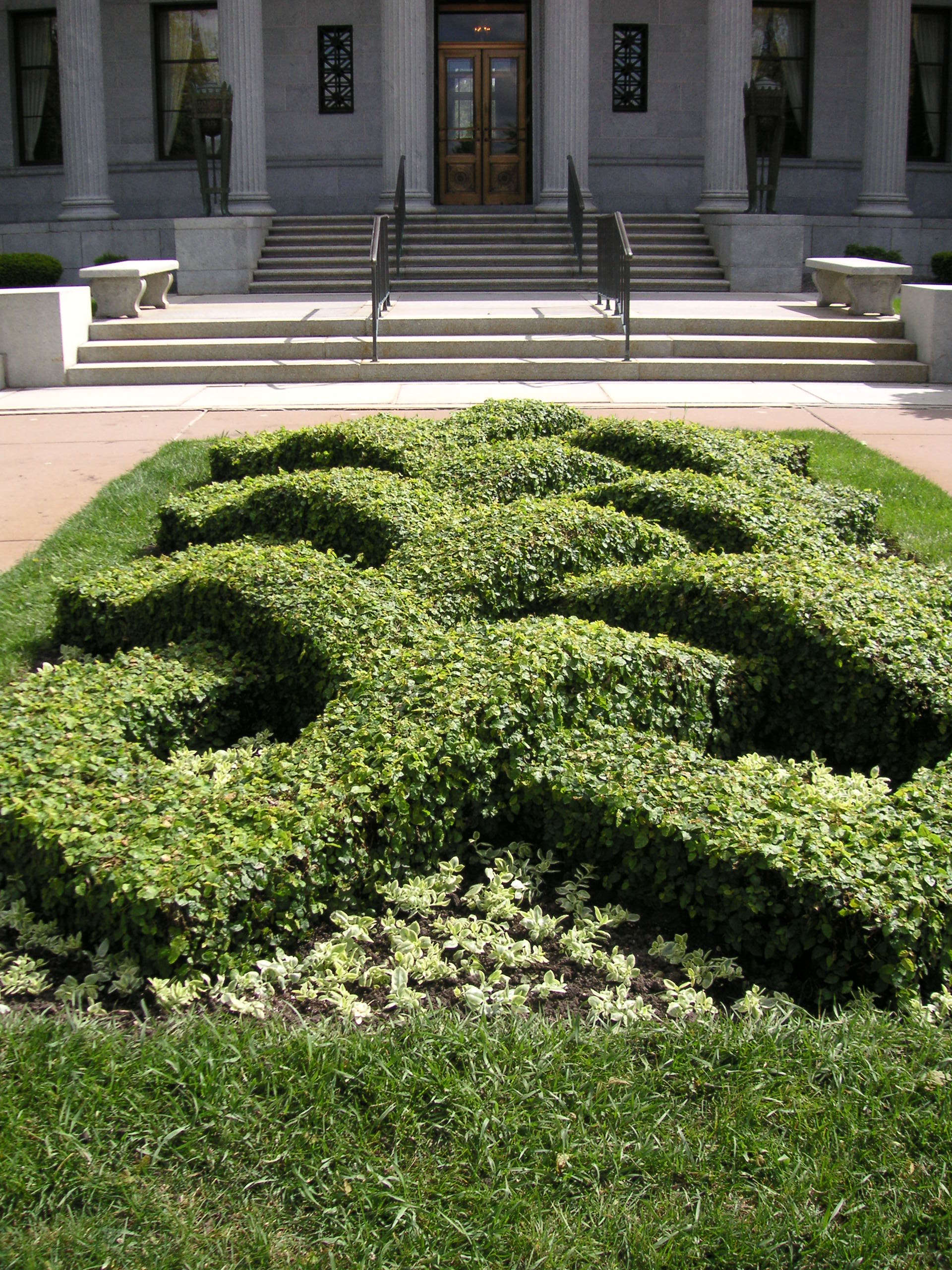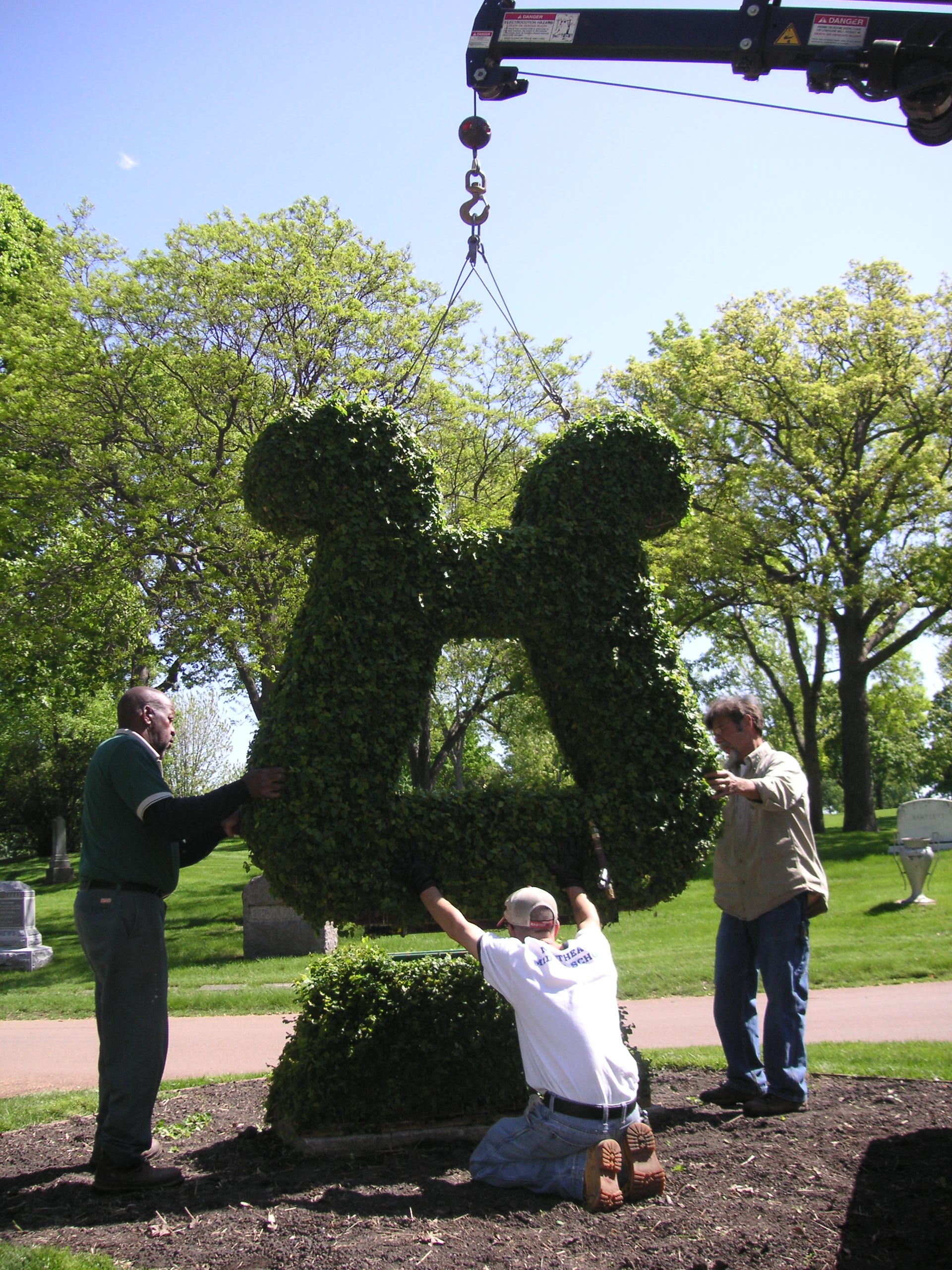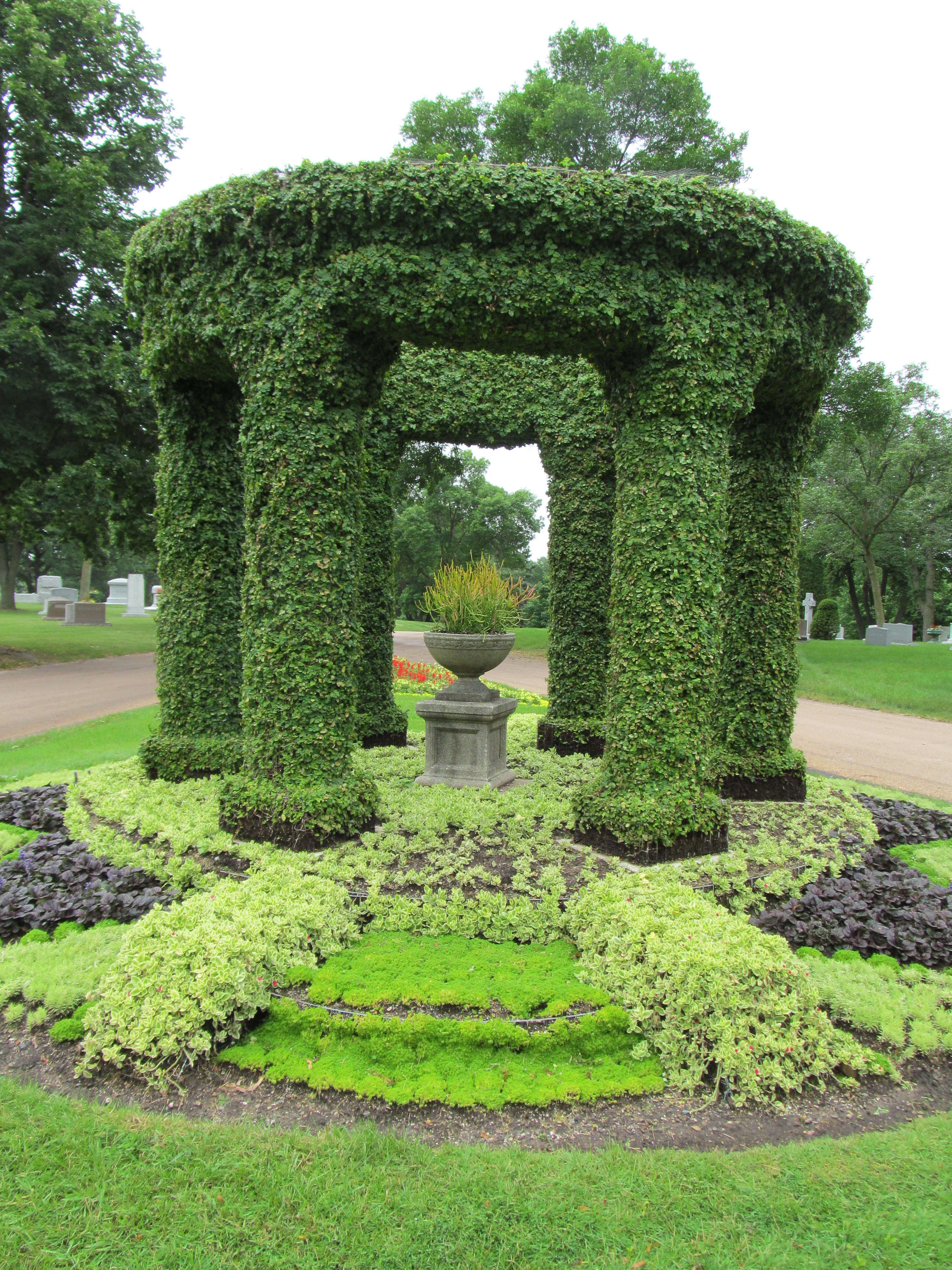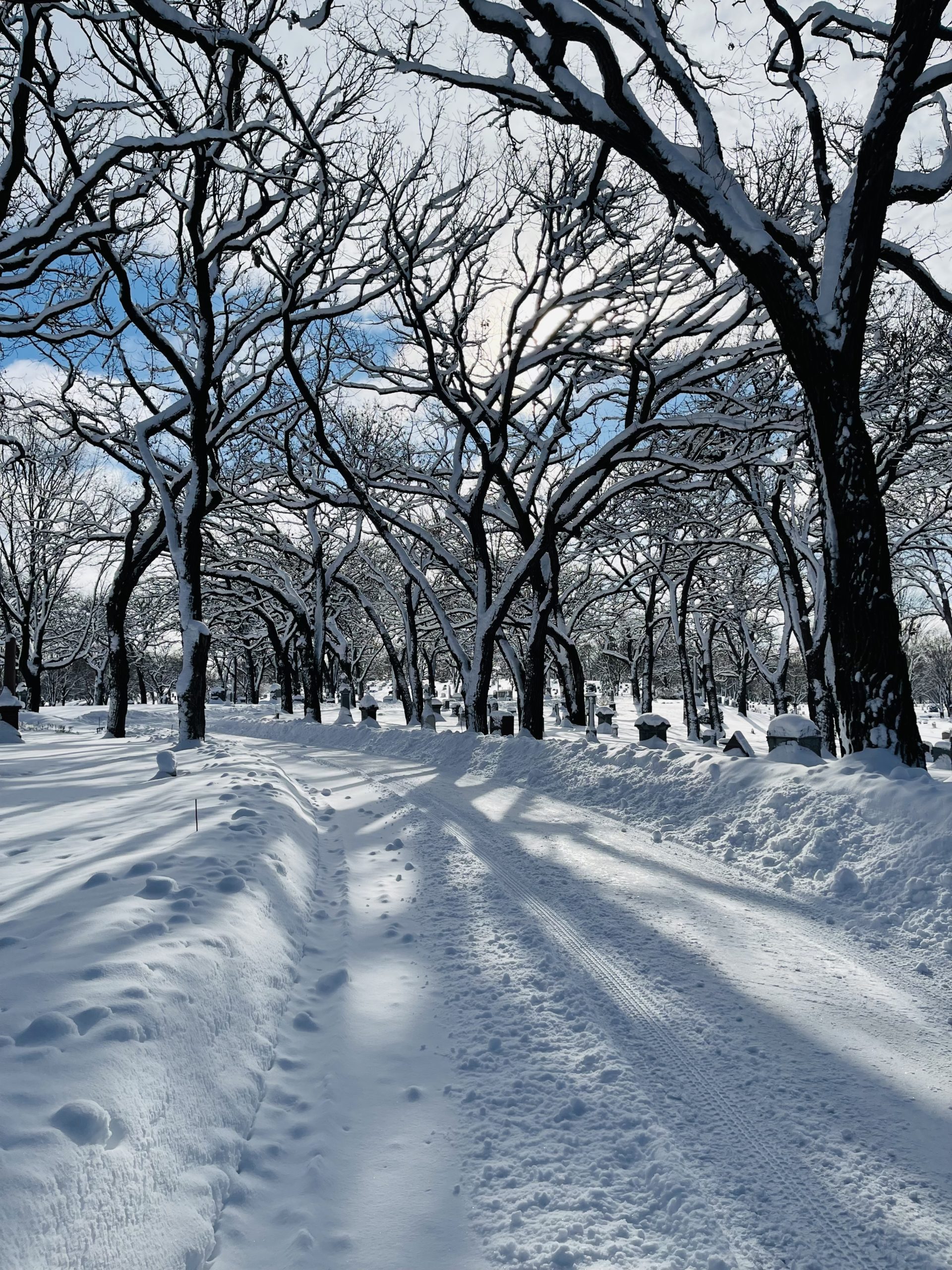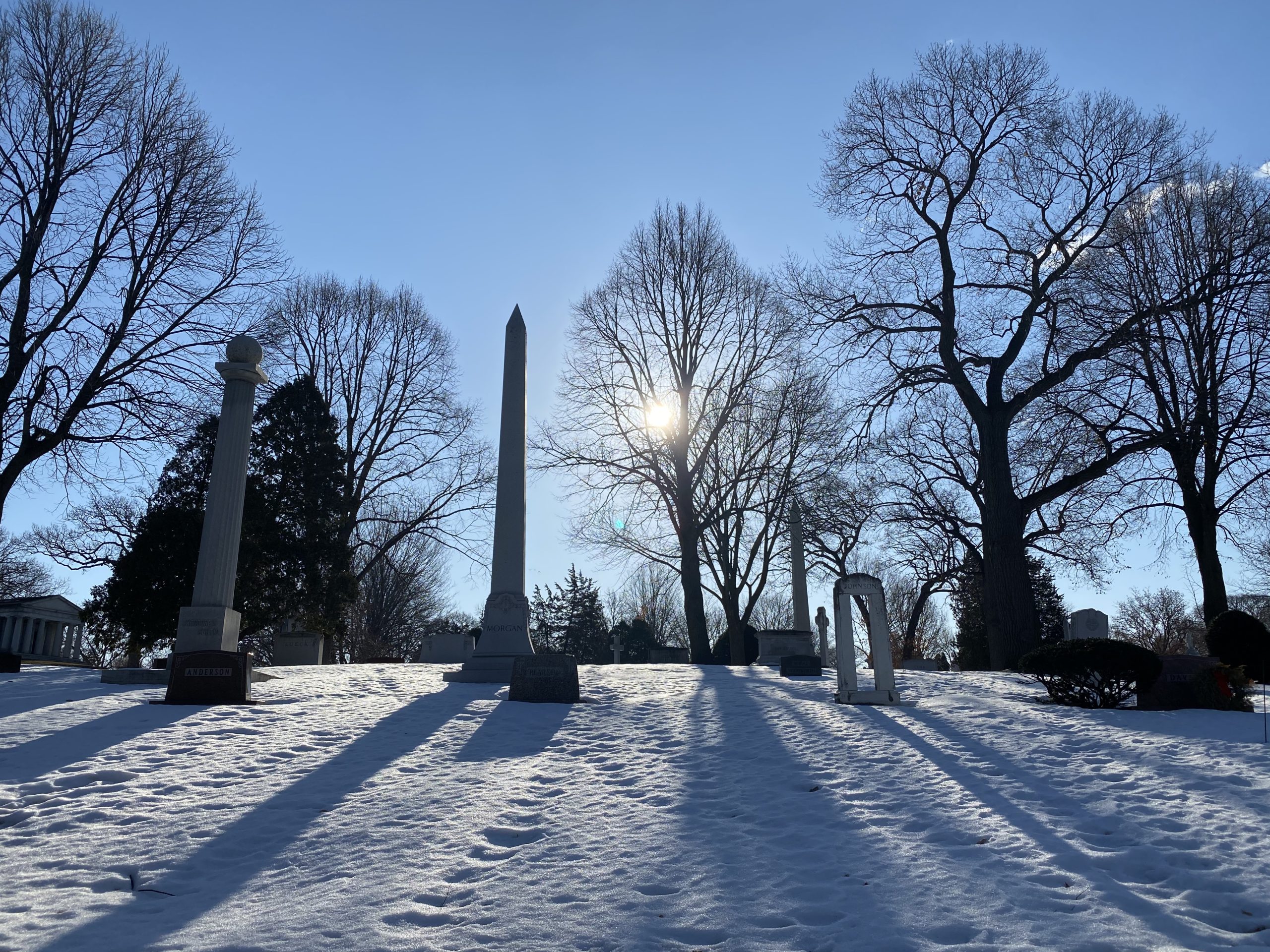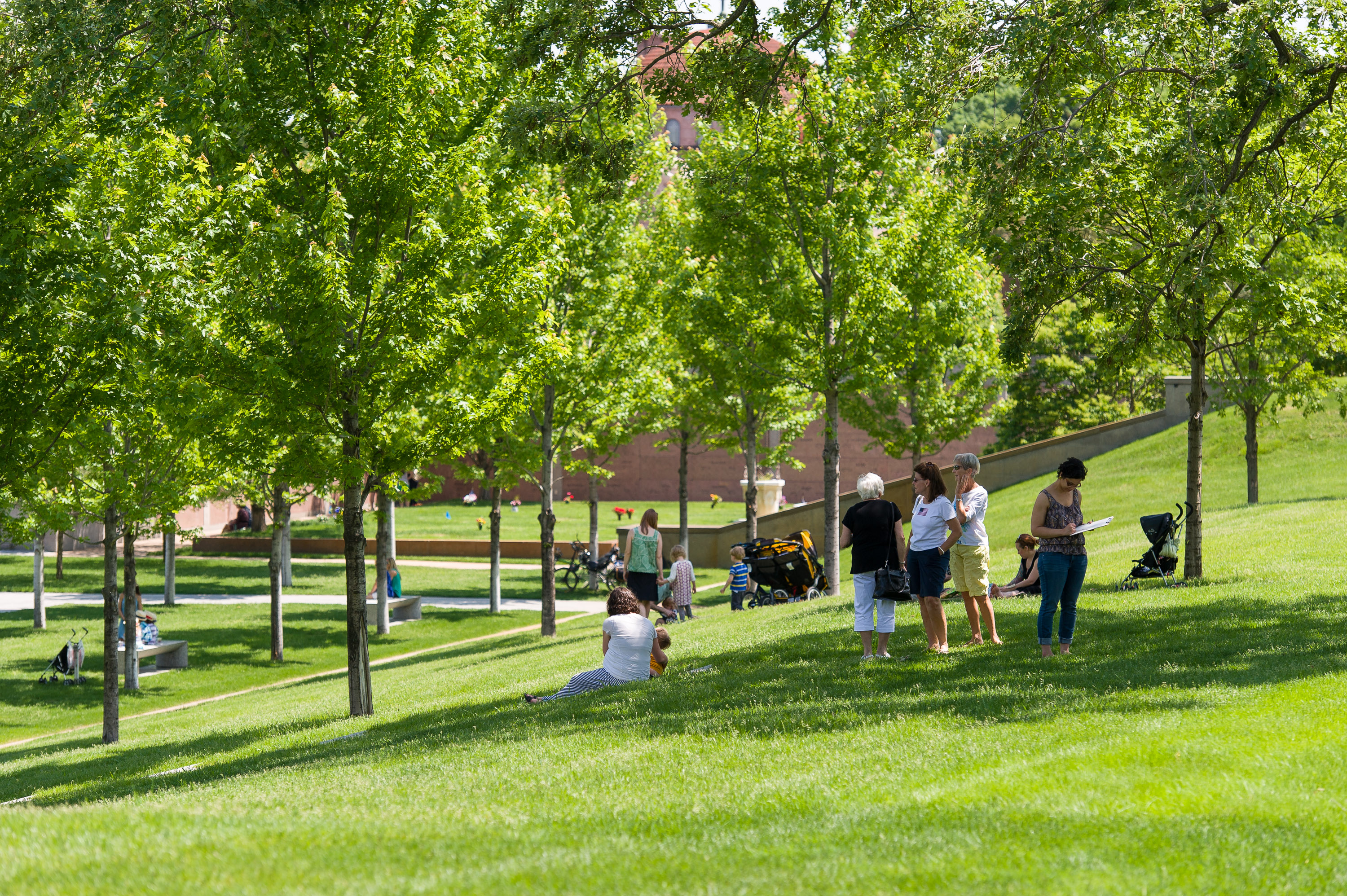You may know that Lakewood is one of the only cemeteries in the country that continues to operate a full service greenhouse operation on site. But did you know that Lakewood was once the largest floral wholesaler west of Chicago? Or that Lakewood’s largest greenhouse is the oldest standing and operational greenhouse in the state?
Today, Lakewood’s greenhouse staff grows over 100,000 plants annually. We maintain meticulous flower beds, create unique topiary and provide comfort to families through our onsite greenhouses.
Before Lakewood: Greenhouse Row and Saunder’s Park
When Lakewood opened to the public in 1872, it was much smaller than it is today. It consisted of only what is now the northwest corner of the cemetery. At the time, the area was very quiet; visitors could access this neighborhood only by foot and horse-drawn carriage. But over the course of the 1870s and 1880s, the neighborhood surrounding the cemetery became a hotbed for greenhouse operations. By the 1880s, 36th street had earned the nickname “Greenhouse Row;” indeed, the “Greenhouse Condominiums” are still located at 36th & Hennepin.
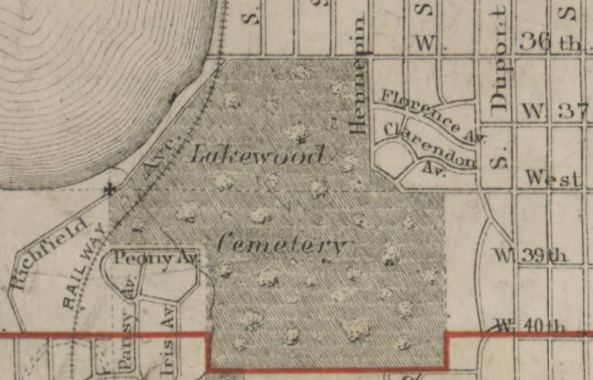
A map showing Lakewood Cemetery in 1885. Source: Hennepin County Library
Despite not having their own greenhouse yet, the stage was set for Lakewood to be involved in the floral industry. From its inception, horticulture was central to Lakewood’s operation. Founded 12 years before the Minneapolis Park Board and 44 years before Como Conservatory, many of Lakewood’s founders are now famously associated with the Minneapolis Park System, including Charles Loring (the namesake of Loring Park) and Horace Cleveland (the architect of the park system). Charles Loring opened the first flower shop in Minneapolis, and attended national conferences of the American Cemetery Superintendent Association where he swapped information with other cemetery leaders about plant hardiness and best practices. Opened before the existence of USDA hardiness zone maps, Lakewood was an innovator in horticulture, and embraced practices of trial and error to ensure the landscape had a variety of unique plants. This innovation meant Lakewood had some of the greatest biodiversity in the area, and early University of Minnesota horticulture students would often take plant identification tests on the grounds.
Lakewood Goes Green: 1888-1940s
In 1888, Lakewood expanded into the nearby Saunder’s Park neighborhood, located just east of Hennepin (were Hennepin to go through 36th street) and south of 36th street. In this expansion the cemetery acquired Hartman’s Greenhouse, which had been in operation since 1886. The acquisition of this property presented the perfect opportunity for Lakewood to get involved in floriculture. Lakewood quickly began producing flowers both for families of the deceased and for the broader Twin Cities.
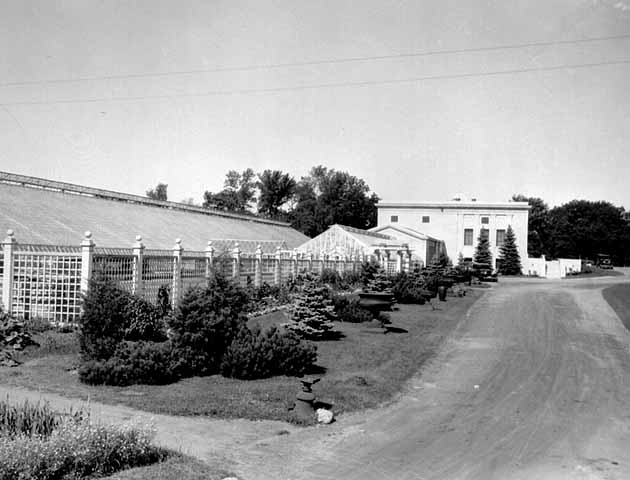
A side view of Lakewood’s large greenhouse in 1924. Source: Minnesota Historical Society
The greenhouse that Lakewood purchased, which today remains the oldest standing and operational greenhouse in Minnesota, used the most innovative technology of the day— but it wasn’t easy to operate a greenhouse in the late 1800s. Lakewood employed someone 24/7 to stoke the coals of a fire to heat up the building. Temperatures were taken constantly, and cold air was let in through the building’s side vents as needed. The tall, peaked construction of the greenhouse—which can still be seen in the greenhouse today—created a sort of “chimney effect,” pushing hot air out the top. Desired temperatures had to be constantly monitored. And when plants were ready to be delivered offsite, it had to happen quickly—the luxury of refrigerated shipping did not yet exist. Lakewood had a horse stable on site, and staff would often make the long journey to St. Paul (and other surrounding sites) to deliver Lakewood’s superb specimens.
As the cemetery grew, so did the greenhouse operation. In fact, Lakewood’s greenhouse operation grew faster than the cemetery, because they sold a high volume of flowers to nearby distributors, companies and individuals. Soon Lakewood had to expand their operation from one large greenhouse to six greenhouses—each larger than a football field. By the early 1900s, Lakewood was the largest floral wholesaler this side of Chicago.
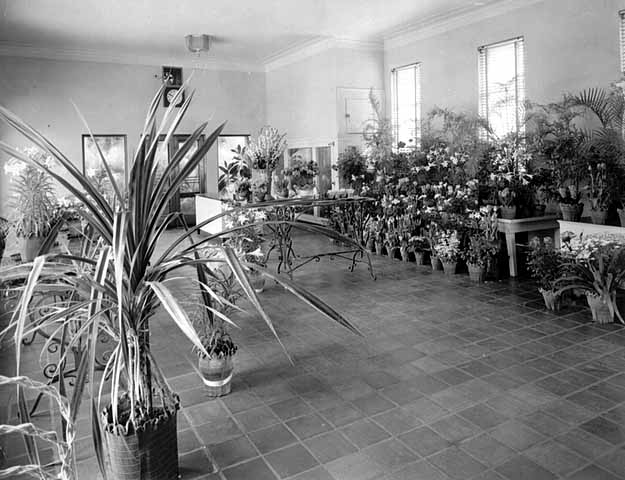
Lakewood’s flower show room in 1924. Source: Minnesota Historical Society
But Lakewood’s success in the floral market caused concern for other growers in the area. Lakewood, a nonprofit since its 1871 founding, had not limited their distribution to other nonprofits. Thus their nonprofit status had given them a leg up in the for-profit world of floriculture. In the 1902, a lawsuit ensued that resulted in Lakewood agreeing to grow flowers only for use within the cemetery grounds. Nonetheless, Lakewood’s greenhouse operation remained a major operation, with flowers for landscaping and memorial arrangements all being cultivated at Lakewood.
Reigning in the Operations: 1940s-1970s
Though Lakewood’s greenhouse operation was still very large throughout the first few decades of the 1900s, the shift to in-house distribution did reduce the scale of the project. The greenhouses continued through the Great Depression, but the labor and material shortages of WWII meant that the operation had been cut down to about half its previous output by the mid-1940s.
The greenhouse operation faced another stumbling block in the 1970s with the onset of the Energy Crisis. It was at this time that many of the country’s cemetery greenhouses closed permanently. In fact, Lakewood’s operations were largely put on hold in the late 1970s, when staff relied on external sources for their flowers.
Thankfully, Lakewood hired Greenhouse Manager Paul Aarestad around this time. Paul, who had recently graduated from Anoka Hennepin Technical College’s horticulture program, knew his history, and he saw just how important flowers and beautiful grounds were to the families that Lakewood served. He proposed more efficient planting methods, including the propagation of disease-resistant flower strains and the use of both starts and seeds.
[endif]–Paul’s innovations were beyond successful. In addition to getting Lakewood’s flower shop back in action, he was able to expand the greenhouse to make the grounds and flower beds the major attraction they had once been.The Greenhouses Today
So many years later, Paul still runs the greenhouse operation. He looks to history and contemporary design when creating Lakewood’s floral landscapes. Just a few years ago, Paul studied historic photos of George Washington’s estate in England, and designed our “knot bed” topiary based on these photos. He also continued Lakewood’s tradition
of innovation by designing our popular “garden temple” and “harp” topiaries. These topiaries are made from cuttings from the Minneapolis Sculpture Garden’s creeping fig plants.
The knot bed, harp, and garden temple topiaries at Lakewood.
Today, Lakewood runs two greenhouses—including the original 1886 Hartman’s greenhouse. The smaller of the two greenhouses is operational year round, and the large greenhouse opens in late winter to accommodate the high volume of plants that need to be ready for display before Memorial Day.
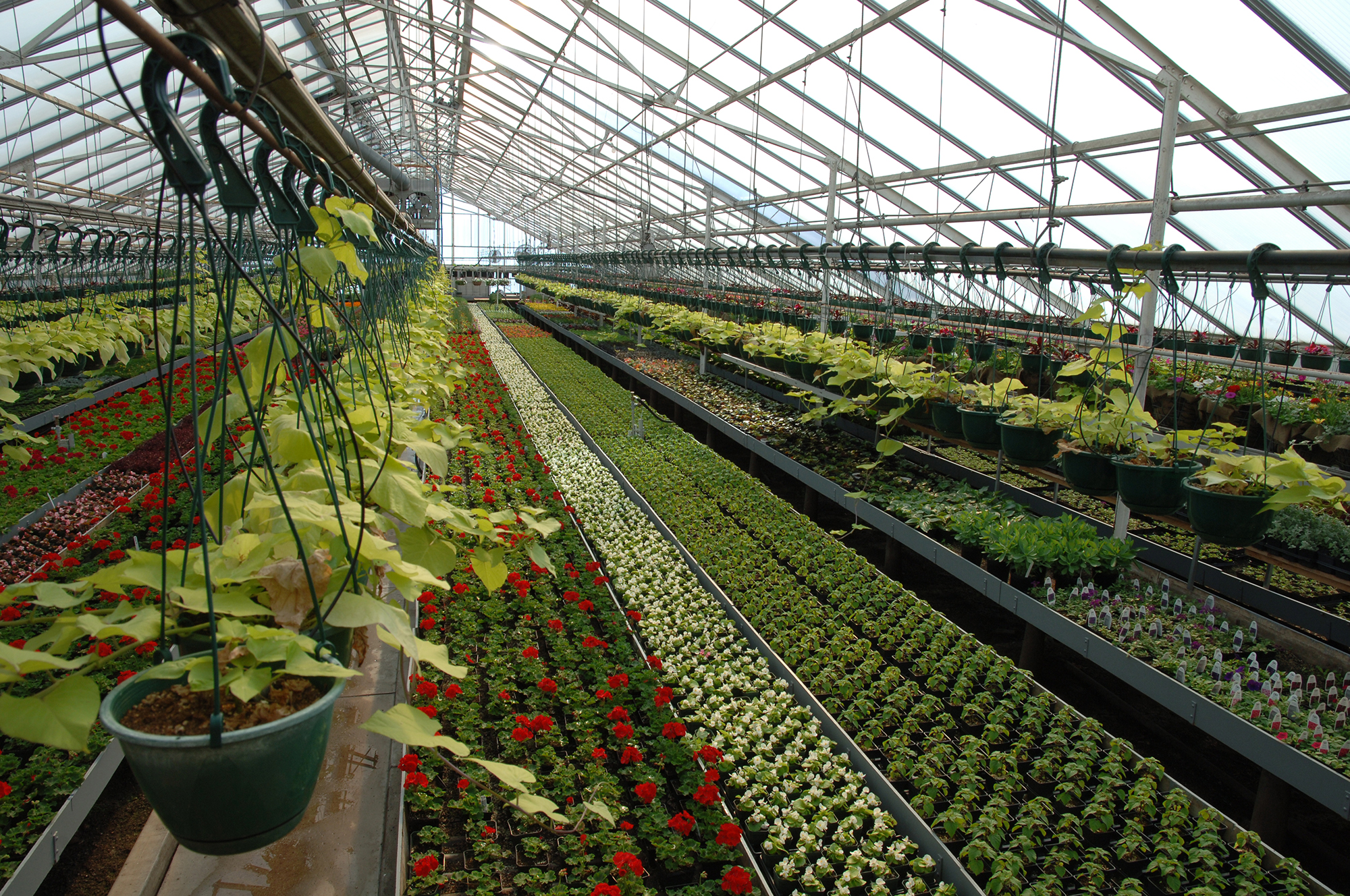
Lakewood’s largest greenhouse today.
Greenhouse staff grow over 100,000 flowers annually. About half of these flowers support our Memorial Arrangements program, or are used to help celebrate loved ones at Lakewood’s weddings and funeral services. The other half of these flowers are arranged in our elaborate flower beds. About half of our flower beds are “sustainable,” meaning flowers used are directly propagated from clippings from previous years’ beds. Paul’s knowledge of history and thorough understanding of contemporary design means our floral landscapes always complement their surroundings: traditional topiary welcomes you to our 1950s Administration Building, and sleek, elegant succulents border the Lakewood Garden Mausoleum.
